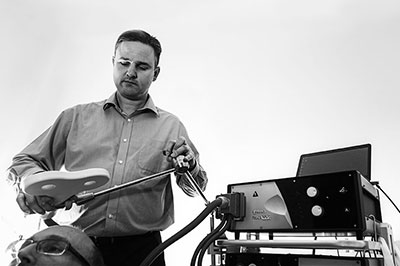Professor Fitzgerald’s journey from TMS sceptic to a world authority on brain stimulation
Magnetic brain stimulation, once considered a novel treatment for depression, has become a mainstream therapy option, particularly for those resistant to depression medication, thanks to the work of Professor Paul Fitzgerald, who has been trialing transcranial magnetic stimulation (TMS) for more than a decade.
In recently published data, the largest study of its kind found that of 1130 people who had taken part in Professor Fitzgerald’s TMS trials over the past decade, 67 per cent had benefited from the treatment – and for 47 per cent, those benefits were life-changing.
TMS uses a hand-held coil generating a magnetic field placed close to the scalp to stimulate electrical activity in specific regions of the brain. In the case of depression, TMS activates the brain’s frontal nerve cells, making them repeatedly fire, strengthening the neural pathways responsible for regulating mood.
Encouragingly, TMS works for some people when nothing else does; people for whom anti-depressants are ineffective, or who can’t tolerate the side effects that can range from weight gain to sexual dysfunction, nausea, headaches, agitation,
At MAPrc, Professor Fitzgerald is continuing trials on TMS to further refine its use and improve outcomes, as well as investigating other novel brain stimulation techniques. These include transcranial direct current stimulation (tDCS), magnetic seizure therapy as a replacement for electroconvulsive therapy, and deep brain stimulation, where electrodes are implanted into the brain to stimulate activity.
Visit Monash magazine online to read the full story.


